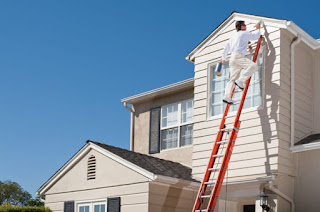6 tips for planning the exterior painting of the house
Changing the house paint is a way to renew the decor without spending a lot. But when it comes to painting, anyone who thinks that the only responsible for an impeccable painting is the paint is wrong. And this rule is no different for exterior painting.
In general, many people still have doubts when it comes to external painting. Some special care must be taken to ensure the ideal result. Whether it's an external or internal painting, planning is essential. Because it is a common practice, many people believe that painting the walls is extremely easy. In fact, it's an easy task if you take the necessary care.
Therefore, this article has some guidelines for you to carry out the external painting of your home without mystery.
Learn how to plan the exterior painting of the house
Climate conditions.
You mustn't just plan to do the exterior painting on hot days, but be aware of weather conditions throughout the day. So, try to prepare the exterior painting for at least a whole week in which there is no forecast of rain. This way, the paint will dry quickly, and touch-ups can be done all at once to prevent the job from being poorly finished. What's more, imagine a still fresh exterior paint exposed to unexpected rains and winds at the end of the day. A case like this can cause immense damage, generating rework and more significant expenses.
Area measurement.
Correctly measuring the area that will be painted is a crucial step in the project. Taking this measurement prevents you from having a loss in terms of the amount of paint.
To make the calculation, it is vital to consider information, such as how many square feet the house has, the desired effect on the painting, and how many coats of paint will be needed to reach the expected result. It is worth remembering that it is always better to calculate the amount of paint leftover than the lack.
Calculating in this way prevents you from making the mistake of, for example, buying a gallon of paint and ending up using only a tiny part of it. Also, pay attention to the colors of the inks during the calculation. Light-colored paints require more coats, mainly if covering a dark background. On the other hand, dark stains cover more efficiently and allow you to more easily identify flaws and areas that will need more coats of paint.
Prepare the surface correctly.
Before starting an external or internal painting, we must observe the condition of the wall. It is essential to check that it does not have cracks, infiltrations, and even dirt. It is common for the walls to be painted to have areas with peeling paint.
In these cases, use coarse sandpaper and spatulas to adjust the finish on the wall. This care must be taken concerning the walls' conditions so that the painting obtains the ideal effect.
Where the paint has not entirely peeled off, use the finest sandpaper to preserve the finish. Thus, it allows a decrease in the perception of irregular crusts on the same wall. For this, the use of acrylic mass is indicated.
After the wall is sanded and the previously damaged paintwork is removed, it's time to apply the primer. It is a product that must be applied to the entire surface to receive the new paint. The primary purpose of the primer is to prepare the base for the fresh paint. There is a specific type of primer for each surface. Without it, stains and peeling of the paint can occur in a short period.
Protect doors and windows.
Before getting your hands dirty and actually starting to paint the outside of the house, look at everything around the walls. Cover existing furniture, objects, very close gardens, and especially the floor. This step is essential to avoid unwanted dirt and spills, such as in the car or on the foliage in the park. Protect doors and windows, so you don't have to repaint them if paint splatters occur. Therefore, use masking tape and plastic canvas to protect windows and doors. Also, use corrugated cardboard and plastic tarps to protect the floor.
Start painting right.
It should start from the ceiling, whether it's an external or internal painting. You must begin to paint from the top down, as this way, you will waste less paint. Another tip is that you try to coordinate your movements so that the painting follows the reading direction, from left to right, from top to bottom. Try to mentally trace horizontal lines and try to fill them in. After all, our brain is already used to following this movement. If there is a flaw, it will be found immediately.
Finally, use the movement of the sun to your advantage. The day before starting the exterior painting of the house, if possible, observe the solar activity.

Comments
Post a Comment